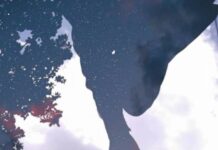🎥 We’re cooking something delicious for you on our YouTube channel. In the coming days, you will learn SSCE literature texts like you're in class 📚✍🏽
Be part of this new journey we are about to embark on.
🔔 Subscribe Now
Akosua ‘Nowa
They say the guinea-fowl lays her treasure
Where only she can find it.
Akosua ‘Nowa is a guinea-fowl;
Go tell her, red ant upon the tree.
I met Akosua ‘Nowa this morning;
I greeted:
Akosua, how is your treasure?
She looked me slowly up and down,
She sneered:
The man is not yet here who’ll find it!
Akosua ‘Nowa has touched my manhood;
Tell her, red ant upon the tree:
If she passes this way I am gone,
I am gone to load my gun.
No matter how hidden deep her treasure,
By my father’s coffin I swear
I’ll shoot my way to it this day;
Son of the hunter king
There is liquid fire in my gun!
— Joe de Graft
Summary
“Akosua ’Nowa” by Joseph Coleman de Graft portrays the back-and-forth of courtship, how rejection can make a man more determined, and how men and women sometimes play this game of pursuit and holding back. The poem is set in Ghana, considering the naming system, cultural references, and local animals peculiar to West Africa.
This poem is about a man’s pursuit of a woman named Akosua ’Nowa. He is interested in this lady. The poet compares her to a guinea fowl, which is a bird known for hiding its eggs really well. In this case, the “eggs” or “treasure” represent Akosua’s affection or maybe her virginity.
The suitor meets Akosua that morning and asks her about her “treasure,” which is a way of flirting with her. But Akosua basically tells him off. She says no man has been good enough to win her over yet.
This rejection wounds the speaker’s masculine ego. It really hurts his feelings. He vows to pursue Akosua ’Nowa more aggressively. He says he will “shoot his way” to her treasure, which implies that he will do all it takes to win the affection of this lady who has rejected his love overture.
Reference
de Graft, J. C. “Akosua ‘Nowa.” In Beneath the Jazz and Brass, 11. London: Heinemann, 1975.
Receive Literary Updates through our Social Media Channels:
- WhatsApp: Literature PADI
- Telegram: Literature PADI
- YouTube: @literaturepadi
- Facebook: Literature PADI












